Healthy pregnancy: your second trimester guide
Understand the key milestones of prenatal development, as well as how to develop a regular schedule of visits to see your healthcare provider during pregnancy.
Updated on March 19, 2024
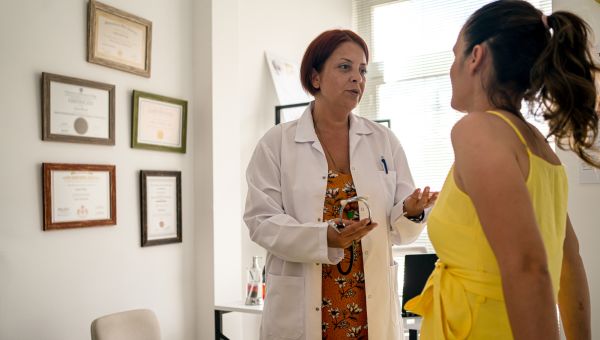
During your first trimester (the first three months of pregnancy), nausea and fatigue are common. These symptoms often improve during the second trimester (the middle three months of pregnancy).
Here’s what you can expect during the second trimester, including when your abdomen may start showing your pregnancy and more.
Remember that if you have what’s considered a high-risk pregnancy—because you are older than 35, have a history of preeclampsia (a pregnancy complication that causes high blood pressure, fluid retention, and protein in the urine, and can harm to the parent or fetus), or have conditions such as diabetes, obesity, or high blood pressure—you may need to see a maternal-fetal medicine (MFM) specialist in addition to your regular healthcare provider (HCP).
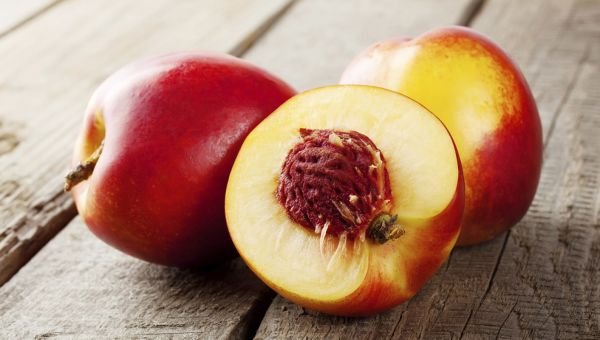
Size at 14 Weeks: Nectarine
Key developments: Your fetus is getting increasingly active, kicking and moving around, though you won’t be able to feel it yet. Face muscles are starting to move, causing random squinting, frowning, sucking, and chewing movements.
What you need to know: Now that your uterus is above the pubic bone, you might have start showing a pregnancy bump on your lower abdomen.
During the second trimester, most pregnant people will have more energy and less morning sickness, says Suzanne Ozbun, MD, of AdventHealth in Shawnee Mission, Kansas. “This is an exciting trimester because it’s when you feel the baby move and start showing.” It’s also the trimester where you can find out the sex of the fetus.

Size at 15 Weeks: Apple
Key developments: The fetus’ eyes are sensitive to light. Eyebrows and eyelashes are also becoming more defined. A fine layer of hair called lanugo develops all over the body.
What you need to know: It used to be common for pregnant people older than 35 to receive an amniocentesis at 16 weeks, a test in which a small amount of amniotic fluid that surrounds the fetus is removed and evaluated for abnormalities in the fetus. Now, most healthcare providers (HCPs) recommend cell-free DNA testing in the first trimester. If the results from DNA screening were concerning, your HCP might recommend an amniocentesis for a closer look.
“Doctor visits in the second trimester are scheduled every four weeks in a patient that’s of normal risk,” says Dr. Ozbun. “In each visit, the physician will review weight, blood pressure, fetal heartbeat, and sometimes your doctor may request a urinalysis [a test done on a sample of urine].”
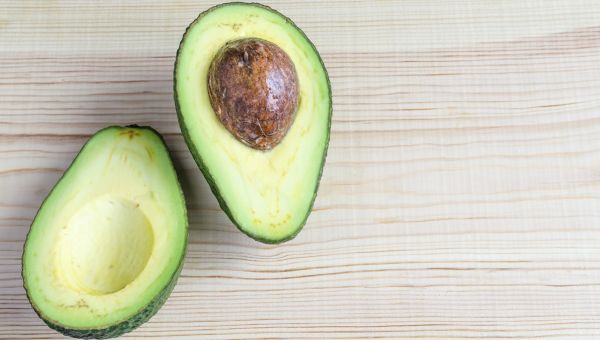
Size at 16 Weeks: Avocado
Key developments: The fetus’ limb movements are becoming more coordinated and may be picked up on ultrasounds, though they are likely still too faint for you to notice.
What you need to know: HCPs recommend you gain about 12 to 14 pounds this trimester. “For the whole pregnancy, we usually expect about a 25- to 35-pound weight gain,” says Ozbun. “We usually tell women to gain around 5 pounds in the first trimester.” The second trimester is a transition point because you may gain very little weight in the beginning of your pregnancy, but then you’ll likely gain about a pound a week in the second trimester, explains Ozbun.
People who are overweight before pregnancy typically need to gain less (such as 15 to 25 pounds total for those considered overweight or 11 to 20 pounds if considered obese), while those who are underweight may need to gain more (up to 40 pounds).

Size at 17 Weeks: Pear
Key developments: Fingernails and toenails begin to develop, and the fetus continues its movements—rolling, flipping, and tumbling.
What you need to know: Your growing belly may make you feel clumsy. And while leg cramps and vivid dreams may disrupt your sleep, you may feel more energized compared to your first trimester.
If you’re finding it hard to sleep, Ozbun suggests a warm bath (not hot) before bed. And if leg cramps are keeping you up at night, make sure you’re drinking enough water because it may be a sign of dehydration. “Also, there are body pillows you can place under your belly and between your knees to help you get comfortable in bed,” says Ozbun.

Size at 18 Weeks: Bell Pepper
Key developments: You may begin to notice the first movements from inside, which may feel like butterflies, bubbles, popcorn popping, or your stomach growling. The fetus may also begin to hear sounds, including your voice, heartbeat, and digestive system. Depending on the quality of the scan (and the fetus’ position), you may be able to see the sex on an ultrasound.
What you need to know: By now your appetite has probably increased. Make sure you’re eating healthy foods, like plenty of fruits and vegetables, whole grains, lean protein and healthy fats like plant oils, nuts, and fish. “If you’re still experiencing nausea with morning sickness, try eating small, frequent meals,” says Ozbun. “You’ll also want to load up on fruits and veggies for vitamins and to help reduce leg cramps.”

Size at 19 Weeks: Mango
Key developments: A greasy, waxy substance called the vernix caseosa coats the entire body of your fetus. This insulates its delicate skin from irritation that can result from exposure to the amniotic fluid that surrounds and cushions the fetus.
What you need to know: Because of your growing belly, you may experience back pain and achiness in your lower abdomen, especially if you’re active. If back pain is slowing you down, try some easy stretching. Belly bands are elastic garments worn around the abdomen that can help support your belly and ease back pain. “If you’re going to be standing for a long period of time, get a step stool to rest one foot on at a time, so you can take pressure off your back,” says Ozbun.

Size at 20 Weeks: Banana
Key developments: In addition to moving around quite a bit, the fetus may begin sucking its thumb, an important skill that will develop soon.
What you need to know: Your uterus is expanding and putting pressure on your diaphragm (the muscle between your upper abdomen and lungs) and bladder, among other organs, which may lead you to feel short of breath—or like you need to urinate every 10 minutes.
Your HCP will probably start measuring your uterus to check that your fetus is growing properly. “We’ll also ask about certain symptoms like bleeding, cramping, leaking fluid, fetal movement, or if you’re having any contractions or signs of preterm labor or signs of preeclampsia [such as high blood pressure, blurry vision, seeing spots, headaches, or nausea.]"says Ozbun.

Size at 21 Weeks: Carrot
Key developments: The small movements you’ve been feeling in your belly may have intensified into gentle kicks and punches at this point.
What you need to know: Your growing uterus may interfere with blood flow from your legs and put pressure on your veins, which causes them to swell and may lead to varicose veins (englarged veins under the skin). “While varicose veins may never go away completely, they often shrink after the baby has been delivered and pressure isn’t on your veins anymore,” says Ozbun.
It’s a good time to think about your sleep position if you haven’t considered it yet. Sleeping on your side provides for optimal circulation for you and the fetus and places the least pressure on your veins and organs, helping reduce potential swelling, varicose veins, and hemorrhoids (swollen blood vessels around the anus and rectum). Sleeping on the left side in particular helps promote blood flow.
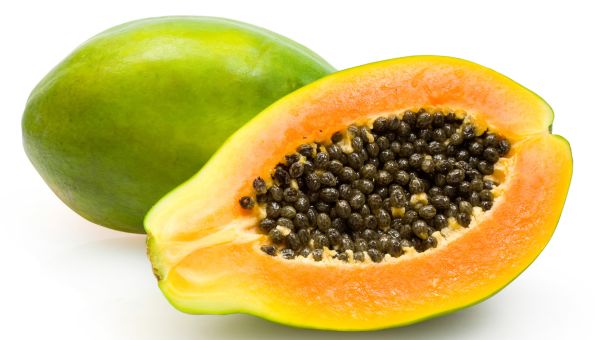
Size at 22 Weeks: Papaya
Key developments: As the fetus swallows amniotic fluid, it is digested and stored in the bowels to be released as meconium when the baby has its first bowel movement.
What you need to know: Braxton Hicks contractions, a sign your body is practicing labor, may occur this week, if they haven’t already.
“The most common cause of Braxton Hicks is dehydration and fatigue,” says Ozbun. “If you’re feeling any contractions, try drinking two glasses of water and lay down for a bit. If these continue or if you’re having more than four contractions an hour, you should call your physician and let them know.”
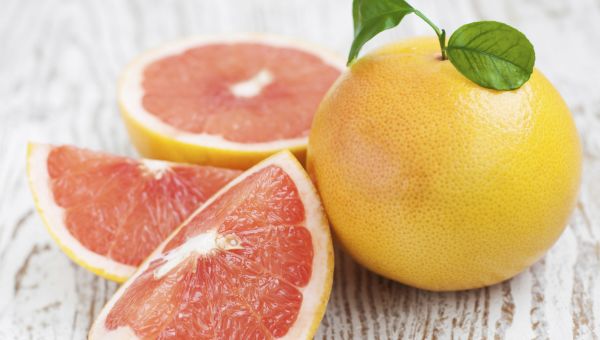
Size at 23 Weeks: Grapefruit
Key developments: As the kicks and punches from inside continue, you may begin to see the surface of your belly move along with them. Fingerprints and toeprints are beginning to form.
What you need to know: Your legs, feet, and hands may swell from edema (fluid retention), especially at the end of the day. You may be feeling restless from nighttime leg cramps, heartburn, and frequent urination. “Sometimes you can relieve edema by resting or elevating the feet or body part that is swollen,” says Ozbun. “Limiting salt to a reasonable amount can also help to ease your symptoms.” Aim to eat less than 2,300 milligrams of salt per day, as outlined by the U.S. Department of Agriculture’s Dietary Guidelines for Americans.

Size at 24 Weeks: Ear of corn
Key developments: The air sacs in the lower portions of the lungs are developing. These expand the surface area of the lungs to eventually promote breathing.
What you need to know: Your uterus is now the size of a soccer ball and it may look as if you’re carrying the fetus higher than you did before. Sometime between now and 28 weeks, you’ll want to get a glucose screening test (GCT) to check for gestational diabetes.
“Gestational diabetes, or high blood sugar in pregnancy, can cause the baby to grow larger than it would have otherwise, which could cause complications with delivery,” says Ozbun.

Size at 25 Weeks: Rutabaga
Key developments: The fetus may respond to your voice and other familiar sounds by moving. Most of the time, though, the fetus will be asleep, cycling between rapid eye movement (REM) and non-REM sleep.
What you need to know: Thanks to hormonal fluctuations, your hair may be looking thicker these days. Unfortunately, your hair will thin out again after labor—in some cases, very quickly.
If you develop anemia (low levels of red blood cells), you may want to eat more protein and green, leafy veggies like spinach to keep iron levels up. “Anemia is common during pregnancy because most of the nutrients are being shuttled from the parent to the fetus, sometimes at the parent’s expense,” says Ozbun.

Size at 26 Weeks: Zucchini
Key developments: The eyes may open for the first time. Meanwhile, the lungs produce a chemical called surfactant, which enables the air sacs to more easily inflate and deflate.
What you need to know: If you experience rapid weight gain or excessive swelling in your legs, ankles, hands, or face, tell your HCP right away because they may be signs of preeclampsia.
The hallmarks of preeclampsia are high blood pressure, protein in the urine, and edema (fluid retention which causes swelling), but it can also cause seizures, stroke, organ failure, and even death of the parent and fetus,” warns Ozbun. “Preeclampsia requires close monitoring and sometimes early intervention.” Once the baby is delivered, preeclampsia typically goes away.
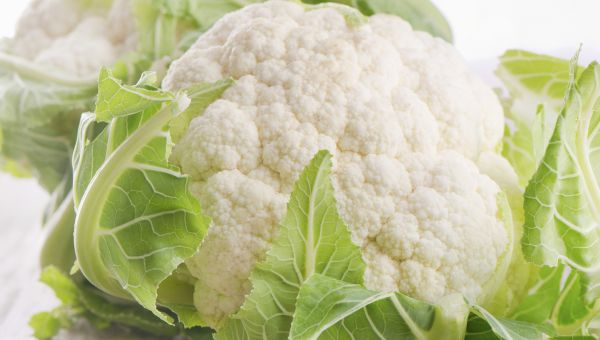
Size at 27 Weeks: Cauliflower
Key developments: The fetus’ wrinkles are beginning to fill out as more fat plumps up the skin. Bodily organs continue to develop and mature. Some of the fetus’ movements may be due to hiccups, which typically have a consistent rhythm and occur in the same part of the belly for a few minutes at a time.
What you need to know: Consider writing a birth plan so that you are ready for delivery. Signing up for a childcare class can help you learn how to take care of your baby at home. “Good prenatal care, good nutrition, and prompt attention to any new issues can help to avoid preterm labor in many cases,” says Ozbun

National Library of Medicine. MedlinePlus. Fetal development. Review date July 13, 2021.
Mayo Clinic. Pregnancy week by week. High-risk pregnancy: Know what to expect. January 18, 2022.
Cleveland Clinic. Fetal Development: Stages of Growth. Last reviewed April 16, 2020.
Public Health England. Week-by-week guide to pregnancy. Accessed November 16, 2022.
Mayo Clinic. Pregnancy week by week. Fetal development: The 2nd trimester. June 3, 2022.
BabyCenter. Pregnancy Week by Week. Accessed November 16, 2022.
Parents. How Big Is My Baby This Week? Here’s a Baby Fruit Size Chart. Updated on May 17, 2022.
UT Southwestern Medical Center. Fetal hiccups won’t harm your baby – they’re totally normal! June 8, 2021.
Jennifer Shu, MD, FAAP. Question: When can my unborn baby hear me? I'd love to be able to read and sing to them. HealthyChildren.org. Last Updated April 28, 2021.
Centers for Disease Control and Prevention. Weight Gain During Pregnancy. Page last reviewed: June 13, 2022.
National Library of Medicine. MedlinePlus. Managing your weight gain during pregnancy. Review date October 5, 2020.
Mayo Clinic. Amniocentesis. October 7, 2022.
American Pregnancy Association. Best Sleeping Positions During Pregnancy. Accessed November 16, 2022.
U.S. Department of Agriculture and U.S. Department of Health and Human Services. Dietary Guidelines for Americans, 2020-2025. 9th Edition. December 2020.
BabyCenter. Glucose screening and glucose tolerance tests. November 14, 2020.
Mount Sinai. Preeclampsia. Accessed November 16, 2022.
More On


video

article

slideshow


video


video
